This past October after spending time in Yosemite and Death Valley National Parks we had planned to do three more backpack trips before heading to Western Washington to spend the holidays with family. We did one in Zion National Park but had to skip the ones we planned to do in Bryce Canyon and Grand Canyon National Parks due to a variety of minor but time consuming issues and we simply ran out of time. However, we can’t complain because we had a great hiking season! Since early April we have done a total of ten backpack trips in four different states, including hiking the entire John Muir Trail, and we slept out in the backcountry a total of 42 nights.
Our campsite on Tanner Beach along the Colorado River in Grand Canyon National Park, Arizona
Where we have been - Zion National Park in Utah and Joshua Tree National Park in California
10/19 - 11/13 2011
In this post:
In this post:
- Backpack trip - 4 day/3 nights in Kolob Canyon and on West Rim Trail in Zion National Park, Utah
- Dayhikes in Joshua Tree National Park, California
- Monterey Bay Aquarium and National Steinbeck Center, California
It is fitting that our last backpack trip of the year was in Zion National Park as it is where we did our first backpack trip back in April. We did a 4 day/3 night backpack trip in the Kolob Canyons area located in the northwest corner of the park starting at the Lee Pass Trailhead off the Kolob Canyon Road. Most of the camping along this route is in designated sites requiring backcountry permits that can be reserved in advance. We hiked down the La Verkin Creek Trail into Kolob Canyon and the fall colors were gorgeous! Brilliant red Maples were scattered amongst bright yellow Oak trees on a background of green vegetation, orange rock and a deep blue sky.
Kolob Canyon in Zion National Park, Utah
We took the short side trail to see Kolob Arch. I have read that this arch is the second longest natural arch in the world after Landscape Arch in Arches National Park. Unfortunately it is impossible to fully appreciate its true size as one is unable to get very close to it and there is a canyon wall directly behind it. That said, it is still impressive and well worth the effort to see it. Photographing Kolob Arch is challenging and is best done in morning light but unfortunately we were not there until late afternoon. In hindsight it would have been a good idea to have camped nearby on La Verkin Creek on the first night in order to be there in the morning.
Kolob Arch in Zion National Park, Utah
We continued down the La Verkin Creek Trail to the Hop Valley Trail and our first campsite. Even though this trail follows Hop Creek it is advised that one doesn’t drink water from it as this area is used by local ranchers to graze cattle. We had been warned by another backpacker that the cows frequent the shady areas designated as campsites and the ground is covered with piles of manure. We set up our tent on the sandy beach instead. I don’t understand why ranchers are still allowed grazing rights in areas now within National Park boundaries but the unfortunate fact is that there are cows in the Hop Valley.
Hop Valley in Zion National Park, Utah
We had stocked up on water at Beatty Springs prior to making camp; enough water for the next 24 hours when we anticipated reaching the next spring. We could have avoided carrying that much water by stashing some at the Hop Valley Trailhead on Kolob Terrace Road but we chose to not do the extra driving necessary to do this. From the Hop Valley Trail we took the Connector Trail to the Wildcat Canyon Trail and continued on to the West Rim Trail. The West Rim Trail follows along the rim with great views of Phantom Valley and canyons to the south.
Phantom Valley in Zion National Park, Utah
The West Rim Trail comes out at Scout Lookout where it joins the trail to Angels Landing, possibly the most popular and crowded trail in the park. Negotiating the crowds at the end of backcountry trips is always difficult for us. But again we really can’t complain. We are aware that crowded, popular trails such as this provide most park visitors with their best park experiences. We so appreciate our physical ability that has enabled us to explore parks more completely as there is so much more to see than what is near parking lots. All of our Kolob Canyon/West Rim backpack trip photos are on Flickr.
Our campsite while backpacking on the West Rim Trail in Zion National Park, Utah
After leaving Zion and tending to assorted vehicle issues we spent several days in Joshua Tree National Park. A Joshua Tree is an improbable plant. It is not a tree or even a cactus but a variety of yucca. It just doesn’t look like any yucca we have ever seen.
Joshua Tree in Joshua Tree National Park, California
Naming this park after the Joshua Tree does not prepare visitors for everything else that is there to be seen. It is also home to some really unique rock formations some of which look as though giants have scattered blocks, of all shapes and sizes, throughout the landscape. The park has become an increasingly popular area for rock climbers.
Joshua Tree National Park, California
The park is also home to an unusual cactus, the Teddy Bear Cholla, so named because of its very deceptive “furry” appearance. Apparently the spines have barbs on the end and once imbedded in fabric, or skin, are quite difficult to remove. The entrance into a short nature trail through the Cholla Cactus Garden is marked with a large sign warning visitors to not touch the cactus. As we were leaving we heard a woman screaming. She had the misfortune of touching a Cholla and someone was pulling the spines out of her hand.
Cholla Cactus in Joshua Tree National Park, California
Another resident plant is the Ocotillo Cactus. It normally just looks like a collection of long spiny dead sticks but after some rainfall, which we had while we were there, the branches become covered in small green leaves and topped with bright red flowers. All of our Joshua Tree National Park photos are on Flickr.
Ocotillo Cactus in Joshua Tree National Park, California
As we began heading north we stopped at the Monterey Bay Aquarium. We really enjoyed the Jelly Fish exhibit as well as the Sea Horse exhibit where we saw what has to be one of the most unusual animals on earth, Leafy Sea Dragons.
Leafy Sea Dragon at Monterey Bay Aquarium in Monterey, California
As John Steinbeck is one of our favorite authors we also made a point of visiting the National Steinbeck Center in Salinas California. We were impressed by the depth of the exhibits but our favorite has got to be “Rocinante”, the truck camper (named after Don Quixote’s horse) that Steinbeck drove throughout the US (with his poodle, Charley) and chronicled in his book, Travels with Charley: In search of America. It was interesting seeing the living space of this truck camper and where this great man sat drinking his whiskey. As fellow “RVers” we felt a humbling affinity with him (except for the dog and the whiskey).
Rocinante, John Steinbeck's truck, displayed in the National Steinbeck Center in Salinas, California
We then headed directly north but were delayed a day due to snow in the pass through the Siskiyou Mountains in Oregon. After having seen the sun nearly every day for the previous six and a half months the grey skies with snow turning to pouring rain was a bit of a shock. We’ve begun making plans for next year’s holiday season to be somewhere in southern California and have our kids come visit us!
Now that the holidays are over we are excitedly anticipating our next adventure to…..New Zealand!!! We will spend three months in this veritable paradise traveling in a campervan and doing as many of the “Great Walks” that we can as well as exploring lesser known scenic spots. We will also spend one month in Australia. We don’t know if and when we will post photos or to this blog as we have ambitious plans and want to make the most of this rare opportunity. At the very least we will do our best to begin posting again not too long after we return to the US in mid May.
This next bit is just something that Jean has been thinking about.
This next bit is just something that Jean has been thinking about.
Unsung heroes
We love to hike and backpack and the deeper into the backcountry the better. But our ability to do this is greatly affected by whether or not there is a trail. Sometimes we do choose to go to areas accessed only by “routes” as we did while backpacking in the Grand Canyon…
The Escalante Route in Grand Canyon National Park, Arizona
…or hike cross country as we did while backpacking in Denali National Park which has no constructed trails in the backcountry.
Hiking up Crystal Creek in Denali National Park, Alaska
But hiking without trails takes more time and energy. Trudging through tundra, marshes, thick brush as well as scrambling over rocks have slowed us down so much that there have been times when we can only cover about one mile in an hour. So we really appreciate well constructed and maintained trails that enable us to hike faster and to go farther.
Jean hiking down the North Kaibab Trail in Grand Canyon National Park, Arizona
While hiking the 200 miles on the John Muir Trail I found myself thinking about trails and what it took to construct them in the first place. I realized that I have taken trails for granted as they have been there for as long as I can remember. But the fact is that those of us who love to hike and backpack owe a great debt of gratitude to everyone involved in the planning and financing of trails. However those deserving the most recognition and appreciation are those who provided the actual physical labor necessary. We only have trails within our National Parks, National Forests, wilderness areas etc because of those individuals who were willing to do the backbreaking work, frequently under difficult conditions and largely using only hand tools.
Trail crew in Grand Canyon National Park, Arizona
Photo courtesy of Grand Canyon National Park Service
Photo courtesy of Grand Canyon National Park Service
Granted not all trails required a herculean effort to build...
On the Grandview Trail in Grand Canyon National Park, Arizona
... but portions of some did require unconventional thinking. Two of our National Parks contain iconic rock features whose steep sides were originally thought to be impossible to climb; Angels Landing in Zion and Half Dome in Yosemite. However, thanks to the addition of chains on the last half mile of the Angels Landing Trail …
Chains on the Angels Landing Trail in Zion National Park, Utah
… and cables on the last 400 feet of the "trail" to the top of Half Dome in 1919, both are now accessible and extremely popular destinations.
The cables on Half Dome in Yosemite National Park, California
However, the majority of trails throughout the backcountry and wilderness areas have required a significant amount of work…
The "Golden Staircase" on the John Muir Trail leading up to Mather Pass (12,100 feet) in Kings Canyon National Park, California
… and there are trails that I simply can’t imagine what it took to carve them through some of the most rugged areas in our country.
Jean descending Forester Pass (13,200 feet) on the John Muir Trail in Sequoia National Park, California
It’s impossible to identify and acknowledge every individual, group, organization or business that has had a hand in the construction of trails however one group that was instrumental in trail construction was the Civilian Conservation Corps. The CCC was a public works program that provided unskilled manual labor jobs to young unemployed, unmarried men (including my own father) during the Great Depression. A book by Neil Maher, Nature's New Deal: The Civilian Conservation Corps and the Roots of the American Environmental Movement, provides detailed information about the role of the CCC.
Members of the Civilian Conservation Corps constructing a trail within Grand Canyon National Park, Arizona
Photo courtesy of Grand Canyon NPS
Photo courtesy of Grand Canyon NPS
Regardless of when, where and how a trail was built at some point in time it will need maintenance and repairs. While there are some trails that were so well constructed that they have held up well for many years.
"Cobblestone Rip Rap" on the Hermit Trail in Grand Canyon National Park, Arizona was built by the Santa Fe Railroad in 1912
Other trails were not as well built or suffer from overuse. Some trails are challenged by unavoidable geographic features such as steep slopes. Those constructed with “switch backs” are more easily maintained…
"Switch backs" on the South Kaibab Trail in Grand Canyon National Park, Arizona
…than trails that run straight up the slope.
The Lazy Mountain Trail in Palmer, Alaska
Maintaining trails that traverse steep slopes can also be challenging especially when built through loose sandy soil without adequate retaining walls.
Other geographic features such as creeks and streams can have a severe negative impact on trails, so severe as to make it virtually impossible to maintain them. The trail to the “Subway”, a popular feature in Zion National Park, closely follows the Left Fork of North Creek up a narrow canyon and normal annual flooding regularly wipes it out.
Other geographic features such as creeks and streams can have a severe negative impact on trails, so severe as to make it virtually impossible to maintain them. The trail to the “Subway”, a popular feature in Zion National Park, closely follows the Left Fork of North Creek up a narrow canyon and normal annual flooding regularly wipes it out.
Negotiating a slide area along the trail to "The Subway" in Zion National Park, Utah
Trails can also be damaged as the result of extreme weather. In the fall of 2006 Mt Rainier National Park experienced record rains and flooding which caused significant damage to multiple areas within the park including obliterating a portion of the Glacier Basin Trail.
Hikers picking their way through the debris along the White River after flooding obliterated the Glacier Basin Trail in Mt Rainer National Park, Washington
Photo courtesy of the Washington Trails Association
Photo courtesy of the Washington Trails Association
Trail maintenance is also complicated by worsening environmental issues. We witnessed this first hand while backpacking through the Weminuche Wilderness Area when we saw the result of the widespread Spruce Bark Beetle infestation; dead trees, hundreds of dead trees, most still standing but far too many were down blocking trails and clogging streams.
Dead Spruce Trees in the Weminuche Wilderness Area, Colorado
Enter the unsung heroes of the backcountry – Trail Maintenance Crews! These amazing individuals routinely hike for miles carrying heavy packs and tools to perform hard physical labor for days on end in order to maintain trails. While hiking the John Muir Trail we had the privilege of meeting several of these individuals with crews representing four different agencies all working toward the same goal, providing us a well maintained trail.
Kiwaku, part of the National Park trail crew working on the John Muir Trail in Kings Canyon National Park, California
We first encountered a Yosemite National Park crew who were working on the heavily used portion of the JMT that runs from Tuolumne Meadows to Donahue Pass. With the help of a rotary hammer and some wedges they were splitting large granite boulders into blocks in order to reconstruct steps and retaining walls. Others were using hammers to break chunks of granite into smaller pieces used to fill in low spots between the larger granite blocks.
Later on while hiking through the John Muir Wilderness we encountered a trail crew with the Student Conservation Association …
Tim with the Student Conservation Association trail crew working on the John Muir Trail in the John Muir Wilderness, California
… as well as a National Forest Service Ranger.
Greg, a National Forest Service Ranger working on the John Muir Trail in the John Muir Wilderness, California
Later still while hiking through Kings Canyon National Park we encountered a trail crew working to stabilize the portion of the John Muir Trail known as “The Golden Staircase”, a series of steep switchbacks leading up to Mather Pass (12,100 feet).
Jeremy, part of the Kings Canyon National Park Trail Crew working on the John Muir Trail in Kings Canyon National Park, California
We so appreciated the work being done by all of these individuals. We can remember other trails we have been on that were badly in need of repairs but unfortunately many agencies are unable to keep up with needed maintenance. Just recently while backpacking on the Continental Divide Trail through the Weminuche Wilderness Area in Colorado we had to climb over or hike well around piles of Bark Beetle killed Spruce trees that blocked the trail.
Several portions of the Continental Divide Trail are blocked by down trees within the Weminuche Wilderness Area, Colorado
This lack of maintenance is a direct result of a continuing history of federal budget cuts to those agencies responsible for maintaining trails on our federal lands. Given the current economic challenges it can only get worse. The individuals; park and wilderness rangers, who have been charged with maintaining the trails on our federal lands are doing their best with their limited budgets and it is completely unrealistic to expect just a few individuals traveling primarily on foot and using hand tools to be able to patrol and clear all of the trails in areas that can cover hundreds of thousands of acres. They need help. They need our help. For those of us who love the outdoors and use trails to get into the backcountry it is now essential that we do our part to help maintain them.
Cody, a member of the High Sierra Volunteer Trail Crew, assisting a National Forest Ranger to clear trails within the John Muir Wilderness
We cannot underestimate what volunteer labor can accomplish. For example volunteers with the Washington Trails Association were instrumental in rerouting and rebuilding the portion of the Glacier Basin Trail in Mt Rainier National Park that was wiped out by the 2006 flood.
The Glacier Basin Trail after WTA volunteers helped reroute and rebuild it in Mt Rainier National Park, Washington
Photo courtesy of the Washington Trails Association
Photo courtesy of the Washington Trails Association
To learn more about what volunteer opportunities are available on our federal lands you can go to the USDA Forest Service website. Another option is to stop by your local REI store and see what volunteer opportunities are available in your area. Or you can go to the REI Volunteer information page on REI’s website. Another option is to use Google to find opportunities. Simply search the words “Volunteer Trail Maintenance” plus the name of the appropriate state. In addition some National Parks have information on their websites regarding volunteer opportunities, Mt Rainier is one example. You could also check out the Student Conservation Association to learn more about opportunities to work or volunteer with the SCA.
Kristen with the Student Conservation Association trail crew working on the John Muir Trail in the John Muir Wilderness, California
I am once again reminded of a quote from one of our son Dan’s favorite books as a kid, The Lorax by Dr Seuss …
“Unless someone like you cares a whole awful lot, nothing's going to get better. It's not”.
We have decided that it would be a great New Year's Resolution to look for opportunities to do some trail maintenance in every state we hike and backpack in. After all if we are strong enough to hike for miles carrying heavy packs then we are strong enough to put in some time with a pick and a shovel.
Tony with the Student Conservation Association trail crew working on the John Muir Trail in the John Muir Wilderness, California
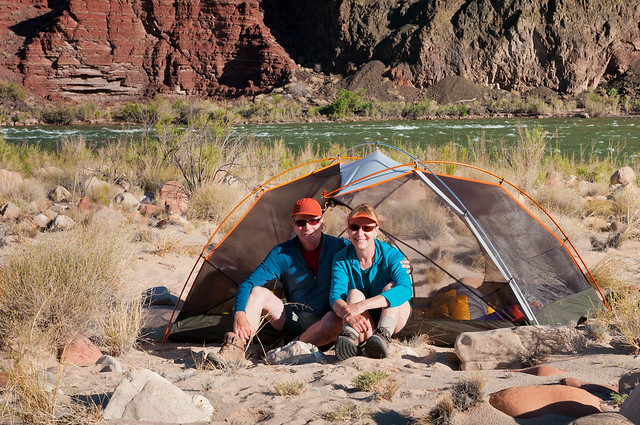
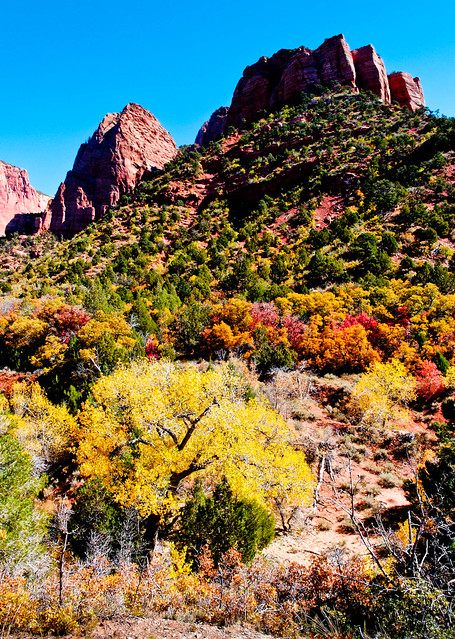
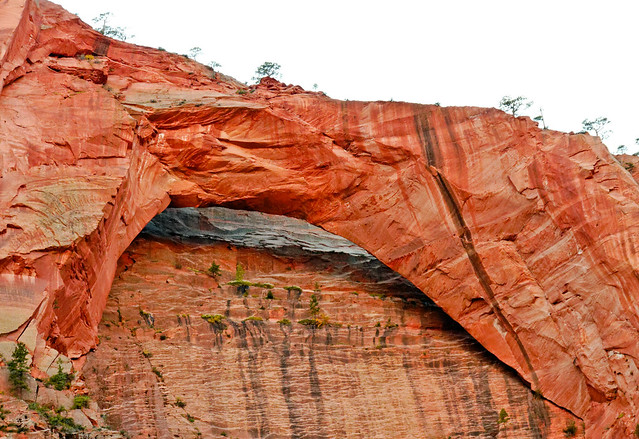
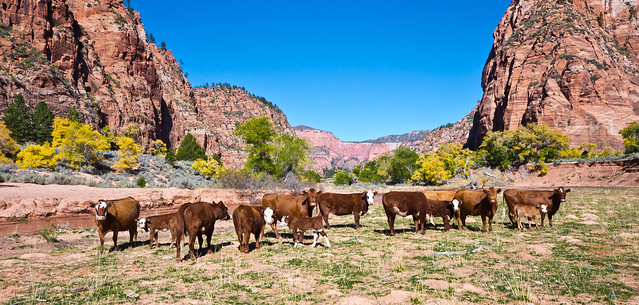
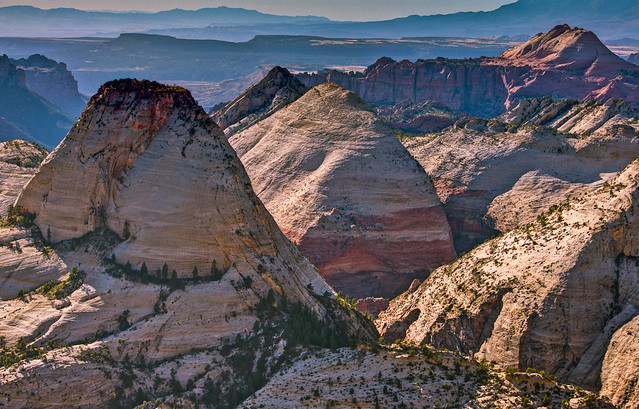
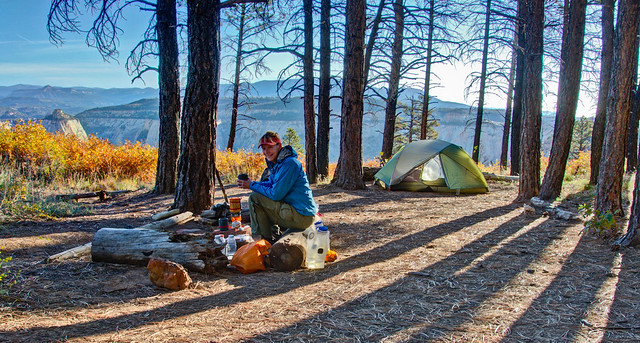
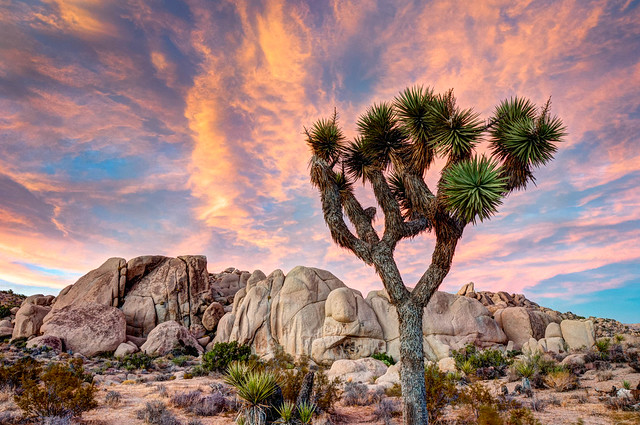
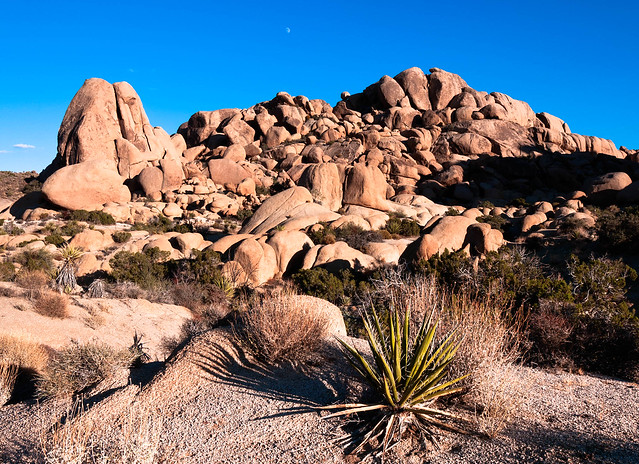


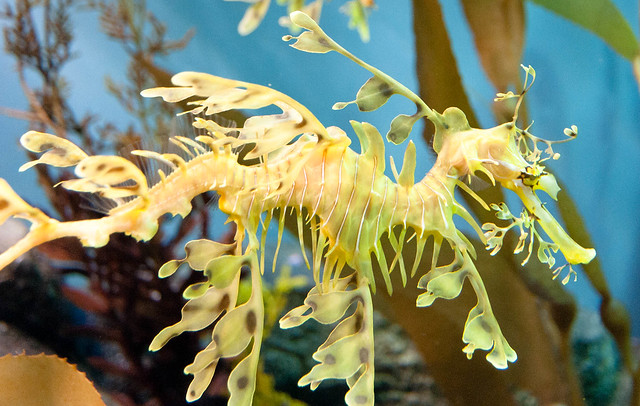
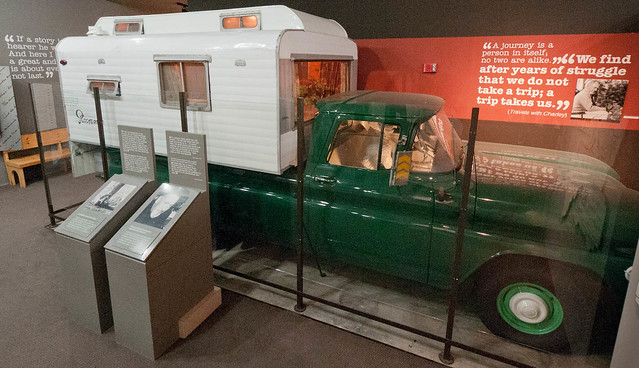
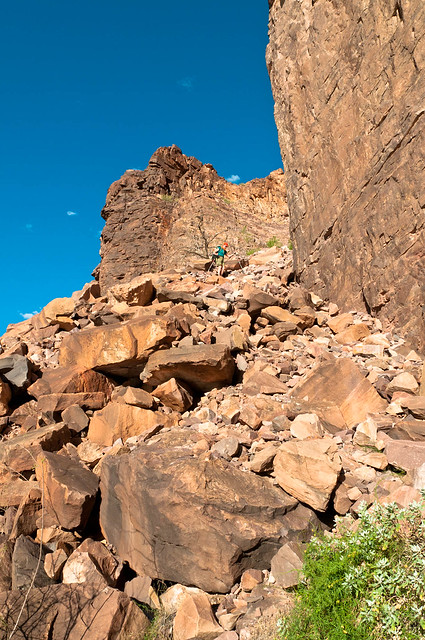
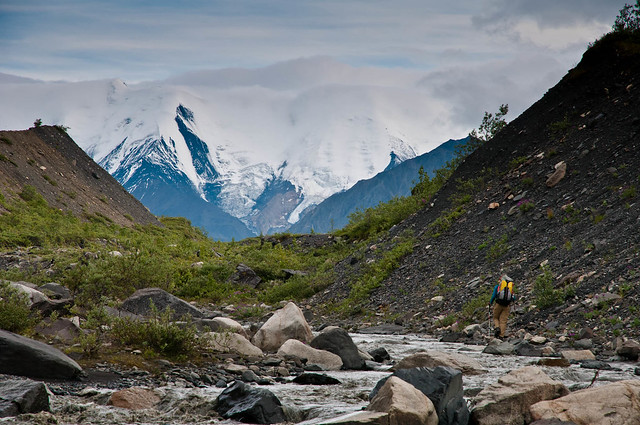



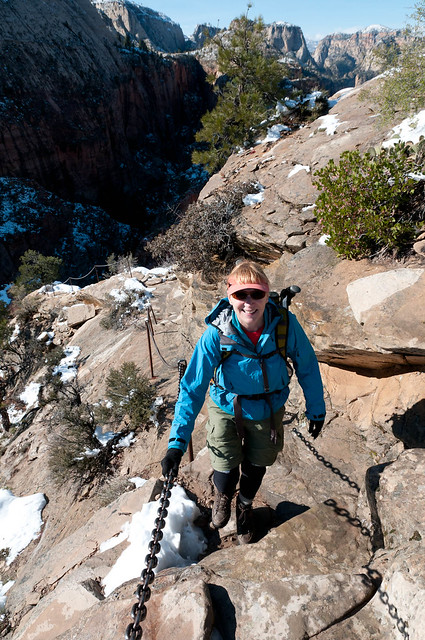
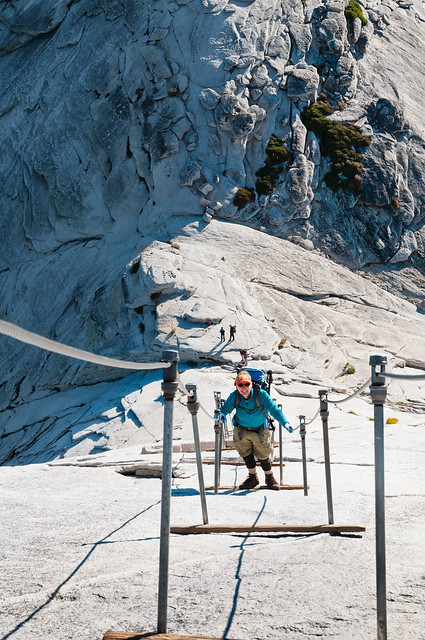
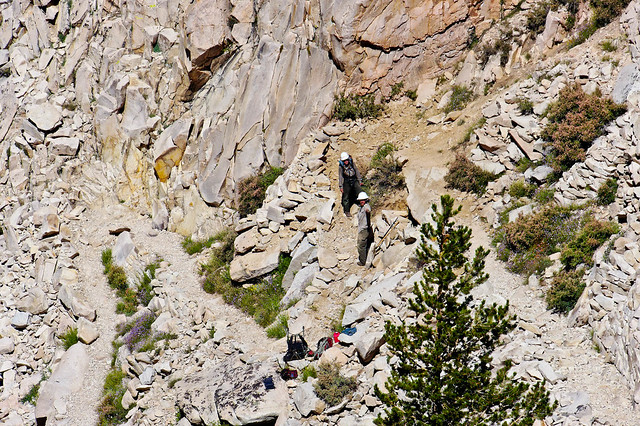
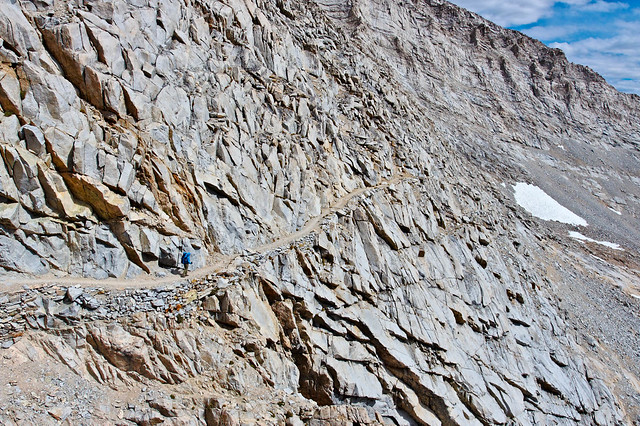

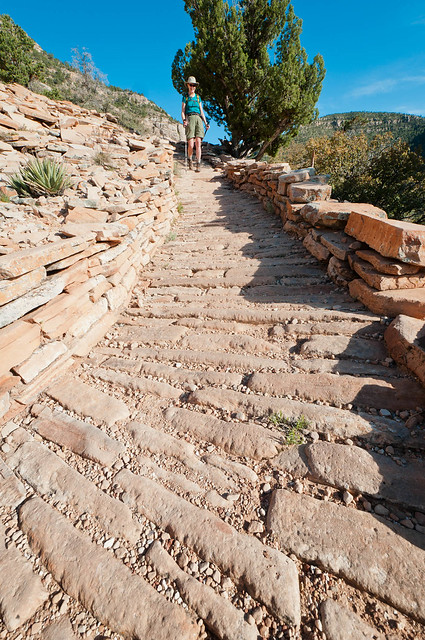
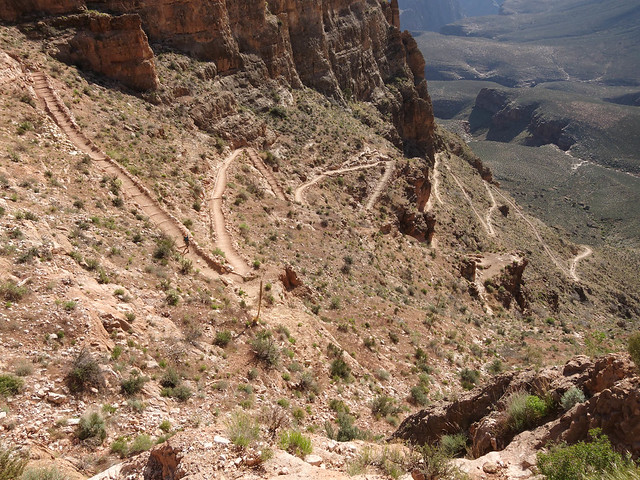
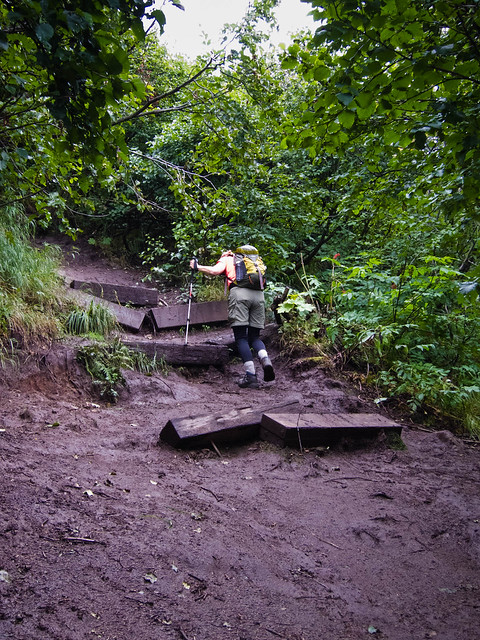
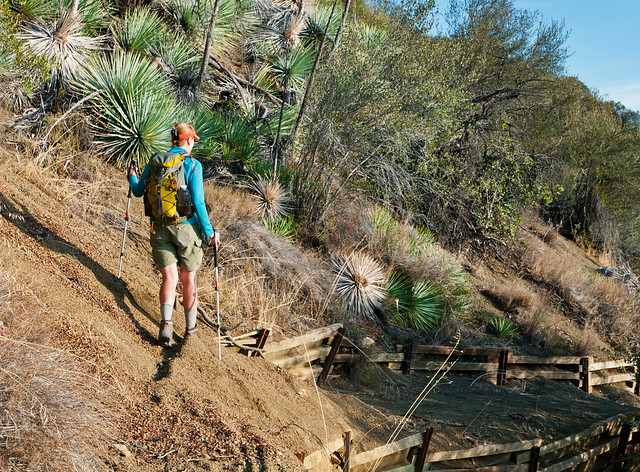
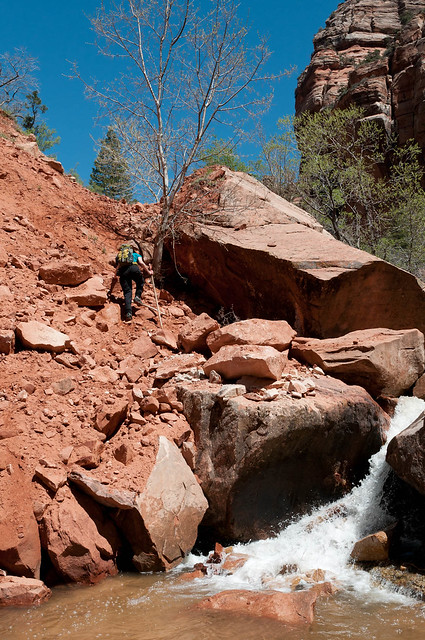

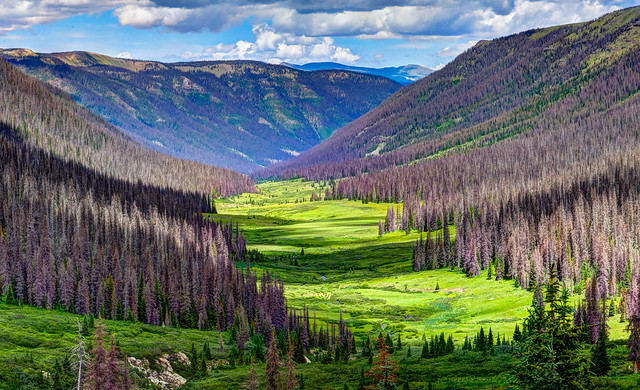
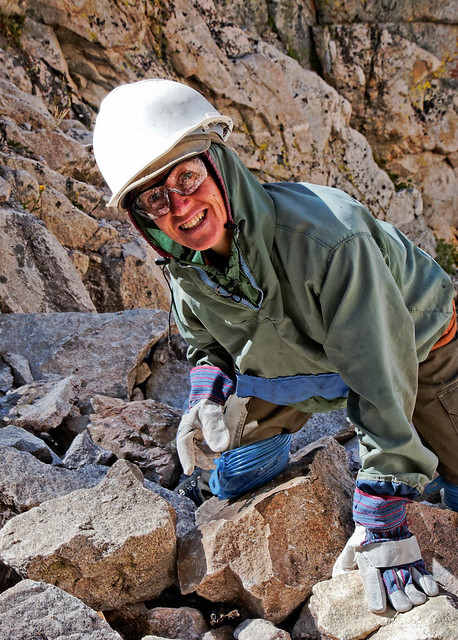
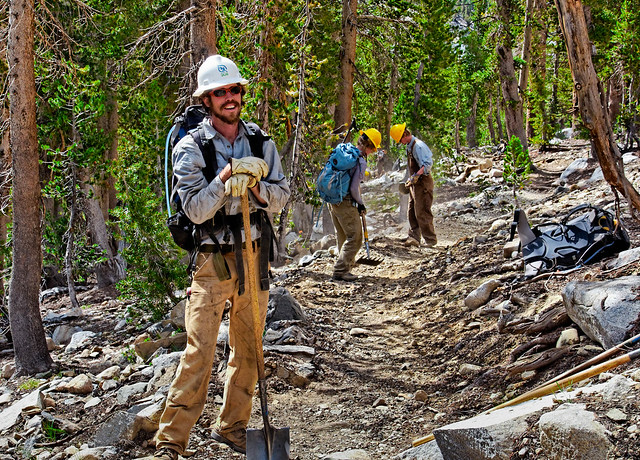
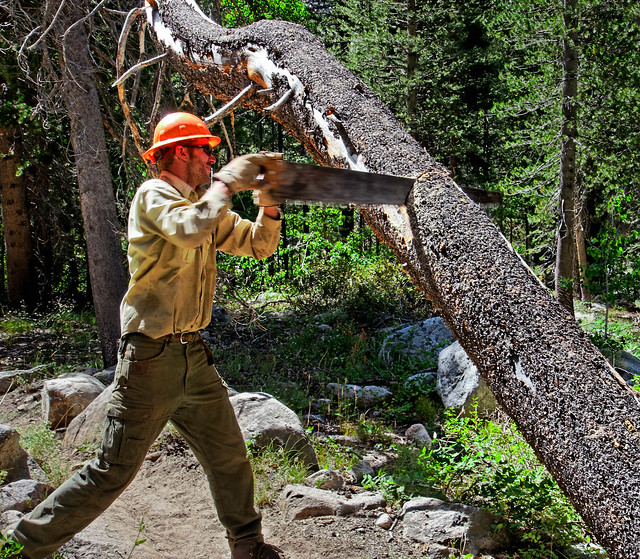



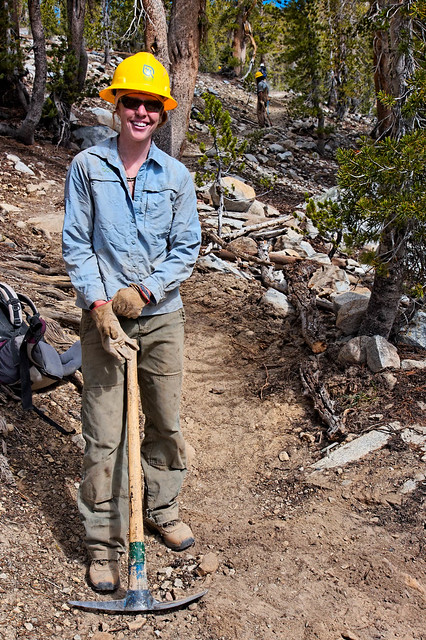





5 comments:
Fabulous photos that bring back many happy memories of my trips to the US and inspire me to return for more.
Jean and John,
Happy 2012. As always thanks for bringing us along on this wonderful adventure!
We look forward to seeing where the road will take you next, and to read your thoughts and see it through the lens of your camera. And it will spark many dreams for the "someday" we can start our own adventures.
Best of Health and Happiness for 2012,
Brian and Staci
Amazing!!! Incredible pictures. Congratulations for making this life possible for yourselves. It looks wonderful.
I worked for the Forest Service and SCA years ago in Idaho, and it was the most rewarding, fun, hard work I've done.
Keep enjoying your travels!
Jill
Your pictures are so amazing! Please tell me how they are so amazing! Also, I hope to see you update soon. I like your posts!
Thanks for the kind words. We've been traveling all summer and haven't be keeping up on comments.
"How are they so amazing"
1. We go great places.
2. I take a million pictures.
3. I use lots of care in post processing.
4. I use High Dynamic Range (HDR) techniques. Sometimes subtly, sometimes for dramatic effect.
At some point, I'll do a equipment and technique blog post.
Thanks,
John
Post a Comment